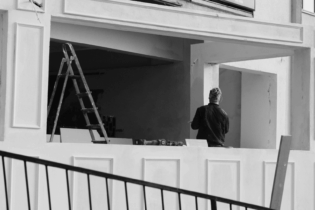
The tanks, originally a thickener and phostrip tank are not ideally configured for the installation of some of the mechanical equipment and controls which presented a challenge for the project team.
The main challenge on the project according to Oldert was working in a space that had originally been designed for something else.
The project involves converting an unused thickener and side-stream Photostrip plant which was installed in 1986 into a facility that will allow the entire treatment process to take place in these two tanks.
“It will always be a challenging project when you are retrofitting a specific technology into existing structures that were not designed for this technology,” explains Oldert.
“The tanks, originally a thickener and phostrip tank are obviously not ideally configured for the installation of some of the mechanical equipment and controls without our modifications. In general, converting the tanks into a buffer tank and Nereda reactor is an exciting challenge for our team and we are very pleased with how we have been able to overcome these challenges,” she notes.
Oldert believes one of the ways they are able to overcome this challenge is by using
Nereda because it is the perfect retrofit technology.
“This technology was always the intended solution in our minds. The concept of using the existing infrastructure provided us with a fantastic opportunity to use this technology and all of the benefits it provides to maximum effect.”
“Plants fitted with this technology use a fraction of the footprint a conventional works requires, and there is significant savings on energy costs too. I believe these attributes will continue to influence designs of future sewage treatment works into the future, whether it be green-field new modules/plants, or another retrofit opportunity,” notes Oldert.
Partnering for excellence
Having an excellent team is crucial for the successful implementation of a project such as this and Oldert believes they are very fortunate to have a great team on this project.
WEC Projects is expertly supported by the technology providers
Royal HaskoningDHV. Their project team also includes civil works entrusted to VCON Civils and electrical works entrusted to Mathosi Engineering Services.
“WEC is an out of the box thinker, and our value add on any project is our ability to value engineer solutions that are best for the project and best for our clients, a sewage treatment plant is an asset to the client that must be utilised to produce high quality effluent that can be safely discharged to protect the environment and the health of our people and working on this project has taught us how to be flexible and think out of the box.”
Click here to read Part 1









